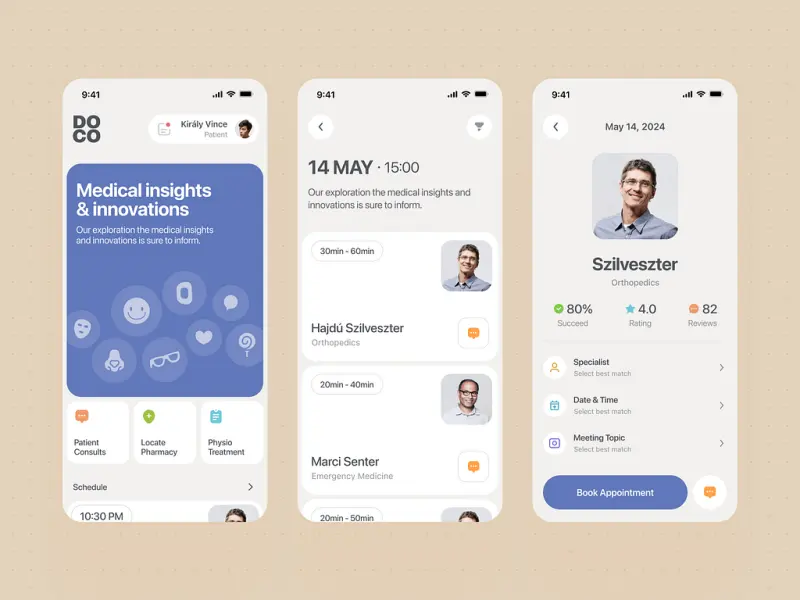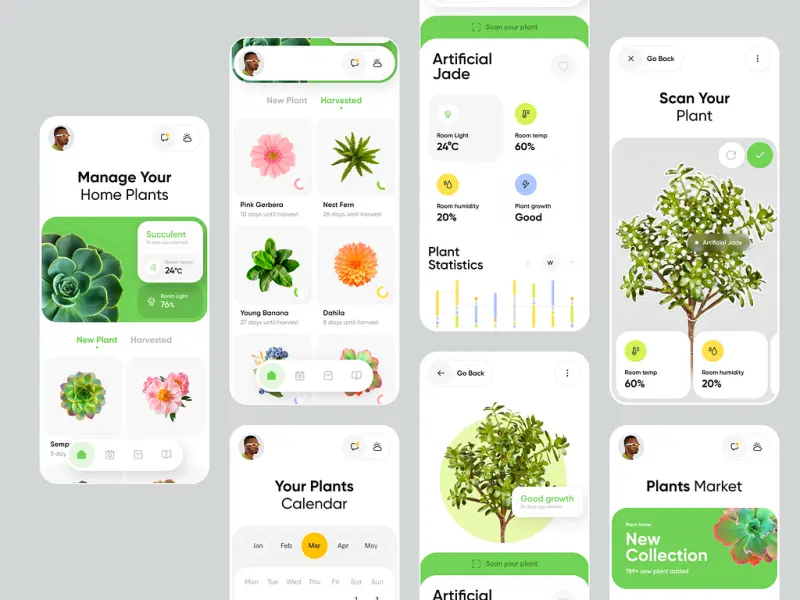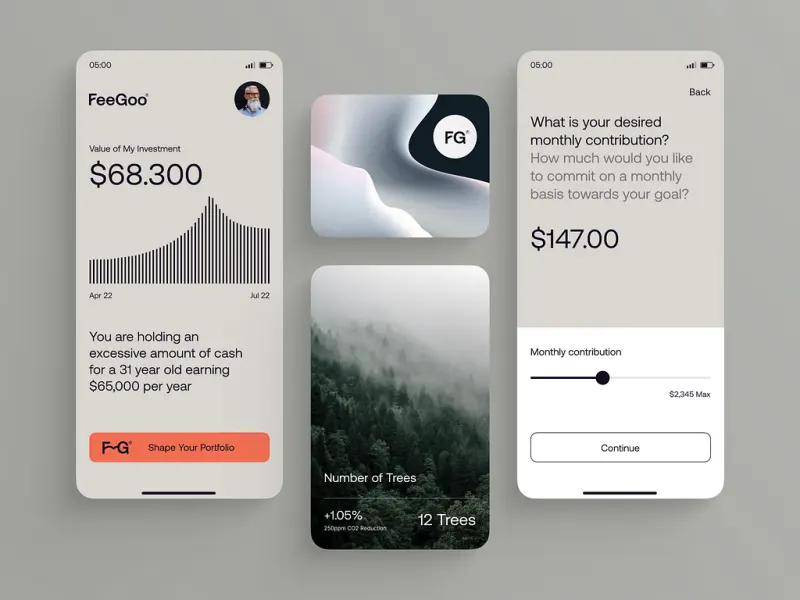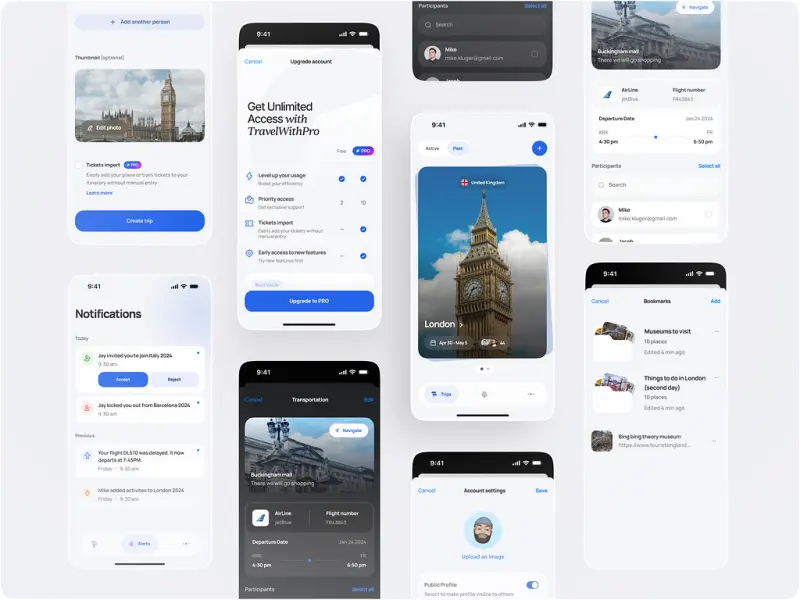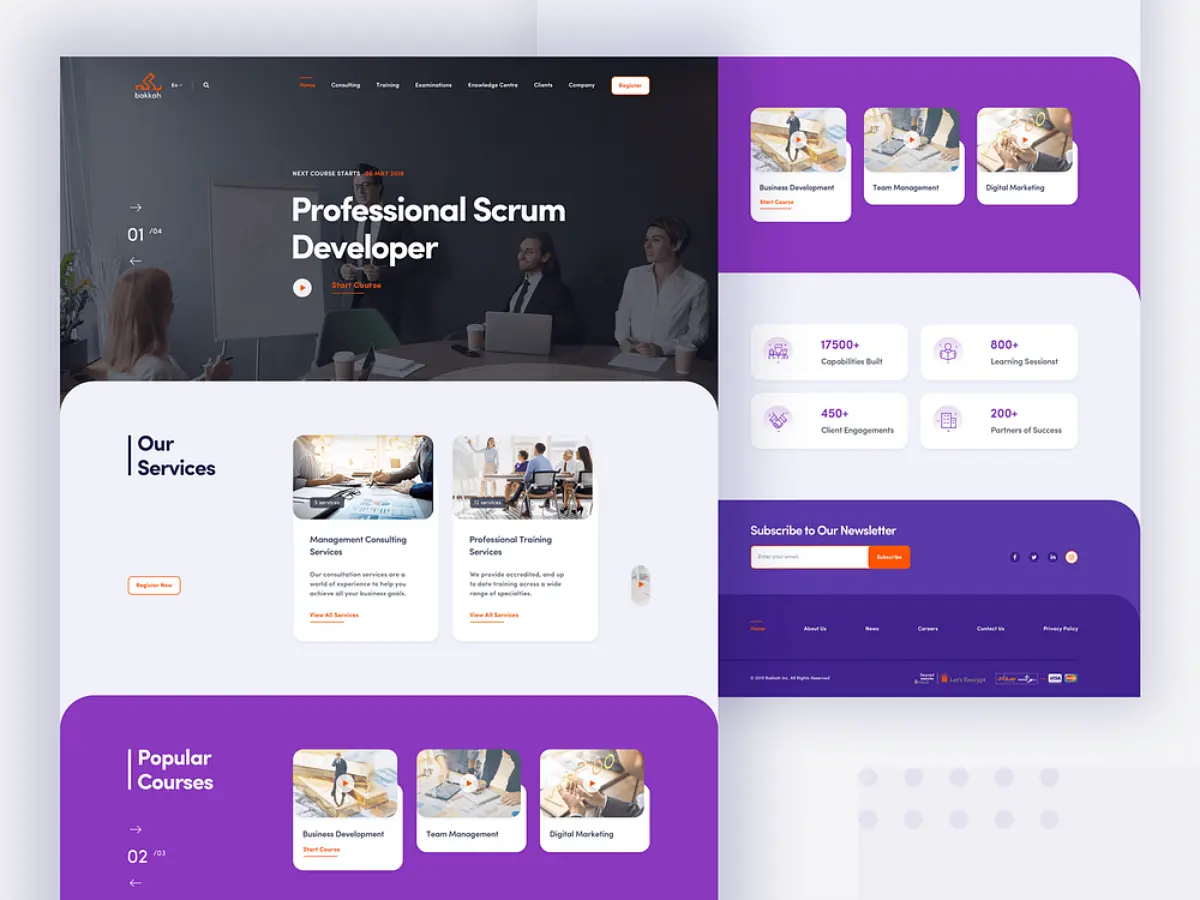A Practical Guide to Minimum Viable Product in Agile for 2025
- TECHVIFY Team
- 0 Comments
The Minimum Viable Product (MVP) lies at the heart of Agile development, completely transforming how products are envisioned, built, and brought to market. In a landscape where consumer expectations keep evolving and market trends shift rapidly, mastering the MVP has become essential for businesses aiming to launch successful products that truly meet user needs.
Research shows that around 90% of startups fail or run out of money within their first year. A thoughtfully designed MVP can prevent many of these failures by helping companies focus on delivering core value early, rather than spreading resources thin across unnecessary features.
In this article, we’ll explore what MVP really means, how it fits into the Agile framework, why some organizations might hesitate to embrace it, and how leveraging a Minimum Viable Product in Agile can drive product success and business growth.
I. What Is the Minimum Viable Product in Agile?
The MVP Agile definition can be started by explaining Agile is a dynamic development framework, commonly used in software projects, that emphasizes delivering working software in short, iterative cycles. These cycles, typically called “sprints” or “iterations,” last between 1-3 weeks and promote continuous improvement. Agile fosters close collaboration between development teams and stakeholders, ensuring everyone is aligned on progress and can quickly respond to shifting requirements.
This approach is particularly effective in product development, where the end goals are often fluid, and new insights emerge throughout the process.
MVP in Agile
Within Agile, the Minimum Viable Product (MVP) plays a critical role. An MVP is the earliest version of a product that includes only the essential features needed to test the product’s vision and gather user feedback. The key here is the word “minimum.” The MVP isn’t meant to be a fully polished, feature-complete product. Instead, it serves as a tool to validate whether the development is on the right track, based on real-world user feedback.
By focusing on the core functionality, teams can quickly determine if their product resonates with users and adjust their roadmap accordingly saving time, effort, and resources.
Learn More On:
II. Building an MVP Using Agile: A Step-by-Step Guide
Creating a Minimum Viable Product in Agile framework is an exciting and strategic process. From defining the core problem to testing your solution, each step brings you closer to launching a product that truly resonates with users. Let’s walk through the key stages of building a Minimum Viable Product in Agile and explore how you can turn an initial idea into a validated market solution.
1. Define the Problem
The journey of building a Minimum Viable Product in Agile starts by clearly defining the problem you’re aiming to solve. This is the foundation of your Agile development process. To uncover the true pain points of your target users, consider the following steps:
- Conduct user research to identify specific frustrations and unmet needs.
- Run interviews and surveys to gain deeper insights into what matters most to your customers.
- Articulate the problem in a simple, concise sentence that captures the core issue from the user’s perspective.
- Frame the problem in a way that highlights the potential impact of solving it.
- Brainstorm minimal features that could address this problem and deliver immediate value to users.
A great way to ensure focus is by applying the OKR (Objectives and Key Results) methodology, a popular goal-setting framework. It helps align teams around measurable, ambitious goals:
- Objectives should be qualitative, clear, and inspirational, motivating everyone involved.
- Key Results should be specific, measurable, and time-bound, ensuring progress can be tracked effectively.
Defining the problem with clarity and precision sets the stage for a successful MVP. It’s not just about having a great idea; it’s about ensuring that idea is both relevant and viable.
2. Analyze Your Competitors
Before diving into development, you need to understand the competitive landscape. Are there already solutions addressing the same problem? And if so, how can your MVP stand out?
- Ensure your idea is unique by checking if your MVP offers something different or solves a problem in a new way.
- Use analytical tools to conduct a thorough market analysis and identify your key competitors, their products, and performance metrics.
- Learn from others’ successes and failures by studying case studies, stories, and best practices from industry leaders.
Understanding your competitors gives you a competitive edge. It allows you to refine your product idea and ensure it meets market demand in a more compelling way than existing alternatives. In short, great preparation leads to better outcomes.
3. Identify MVP Features
Once you’ve defined the problem and researched the competition, it’s time to identify the essential features your MVP needs to address user pain points. The key here is to keep things simple and focused on delivering core value.
Here’s how to identify the right features for your Agile MVP:
- Pinpoint the most pressing user pain points that your solution can tackle.
- Engage with potential users through surveys, interviews, or focus groups to gather valuable insights.
- Define the must-have features that will enable the core functionality of your product.
Remember, your MVP should solve at least one real problem for your customers. Avoid overcomplicating the solution—focus on simplicity and smooth functionality. Once you’ve identified the core features, it’s time to create a product roadmap, define user stories, and map out the user flows. This ensures that your MVP remains aligned with both user needs and development goals.
Minimum Viable Product in Agile
4. Apply the Build-Measure-Learn Approach
Now comes the iterative development phase, where the Build-Measure-Learn process takes center stage. Using Agile principles, your team will break the development process into sprints—short, focused cycles that deliver tangible results.
In each sprint, you’ll:
- Build a feature, focusing on core functionality.
- Measure user feedback through testing and analysis.
- Learn from the results and apply those insights to the next iteration.
This iterative approach allows for constant adjustments based on real-world feedback, ensuring that your MVP evolves in line with user expectations. Collaboration is key here: close communication between teams, stakeholders, and customers enables quick pivots and improvements along the way.
5. Continue Building or Pivot
At some point during development, your MVP will provide enough data to make a critical decision: should you continue building the product as planned, pivot to a new direction, or abandon the idea altogether?
- Ask users what they want—gather feedback and analyze it carefully.
- Decide whether to continue, pivot, or stop based on the insights gained from your MVP.
Remember, building an MVP isn’t just about coding—it’s about searching for validation. The goal is to create something that users will love and find valuable. If the feedback shows you’re on the right track, keep building! If not, don’t be afraid to make changes or rethink your approach.
In the end, Agile MVP development is a process of learning, adapting, and growing. Every step brings you closer to creating a product that not only solves real problems but also delivers meaningful value to your users.
Have a Project Idea in Mind?
Get in touch with experts for a free consultation. We’ll help you decide on next steps, explain how the development process is organized, and provide you with a free project estimate.
III. The Benefits of Minimum Viable Product in Agile
Combining the lean approach of a Minimum Viable Product (MVP) with the iterative power of Agile creates a strategic tool that empowers development teams to make well-informed decisions throughout the product lifecycle. By blending Agile’s flexibility with the focused experimentation of an MVP, businesses can unlock a wide range of benefits that set the stage for long-term success.
- Faster Time to Market
In Agile, the MVP approach allows for rapid development and quicker releases. Since an MVP focuses only on core, essential features, it takes significantly less time to develop compared to a fully polished product. This means that you can deliver value to your users faster and start gathering feedback in real time—without waiting for a feature-complete version. - Optimized Development Process
Agile’s adaptable nature enables development teams to respond swiftly to changing requirements. Whether it’s scaling the team or adjusting the project scope, Agile’s iterative framework ensures that the development process remains flexible. This agility allows developers to optimize their workflow, ensuring that resources are allocated efficiently as new challenges and opportunities arise. - Greater Visibility and Transparency
One of the key strengths of Agile is its emphasis on frequent and transparent communication. Regular check-ins, daily standups, and constant feedback cycles keep everyone—developers, stakeholders, and teams—on the same page. This level of visibility ensures that there’s no ambiguity in the project’s progress, making it easier to spot and address potential issues early. - Attraction of Investors
With Agile, you don’t need to wait until your product is fully developed to show results. By delivering an MVP early in the process, you can present investors with a tangible product that demonstrates the potential of your business idea. Having something concrete to showcase—rather than just a concept—can be a powerful way to attract investment while minimizing upfront work and costs. - Reduced Costs
Building an MVP within the Agile framework isn’t just about speed—it’s also about cost efficiency. MVP development allows you to test your business idea early on, saving both time and money. By focusing only on essential features and adjusting based on user feedback, you avoid wasting resources on unnecessary features that might not resonate with your audience. This lean approach ensures that you’re only investing in what truly matters. - Risk Mitigation
Agile MVP development provides an opportunity to test ideas and assumptions early, reducing the risk of building a product that doesn’t meet market needs. By experimenting with different pricing models, monetization strategies, or even core features, teams can pivot or iterate quickly to ensure their product is on the right track. This minimizes the risk of costly missteps later in the development process. - User-Centric Design
In Agile, the MVP is shaped by user feedback from the very beginning. This means that your product is designed with the customer’s needs in mind, rather than relying on assumptions. By continuously iterating based on real-world feedback, you ensure that your product evolves in a way that directly enhances the user experience—leading to a solution that’s not only functional but also highly relevant to your audience.
IV. Minimum Viable Product in Agile: Best Practices
When it comes to developing an MVP, the Agile development model stands out as one of the most effective approaches. At Upsilon, we’ve been using Agile to build MVP products for over five years, and through that experience, we’ve identified some key best practices that can accelerate your development process and help deliver meaningful results. Let’s take a closer look at the most important Agile practices that can be applied to MVP development.
MVP in Agile best practices
Iterative Development
At the core of Agile lies iterative development, which breaks the process down into manageable sprints. Think of it like hiking up Mount Kilimanjaro. The journey is new, and conditions can change rapidly, so flexibility is key. Along the way, you’ll make stops to assess your surroundings and adjust your plan based on real-time conditions. It would be reckless to push forward without pausing to evaluate—ignoring the weather, terrain, or other variables. The same principle applies to software development.
In Agile, you work in small, iterative cycles, each ending with a visible result—typically a working version of the product. This approach allows for continuous testing and user feedback at every step. Each iteration builds upon the last, ensuring that your product is evolving and improving over time. This contrasts with traditional methods, where teams often spend too much time developing a large-scale product all at once, only to discover gaps or issues too late in the process.
Close Team Collaboration
Just as you wouldn’t climb Kilimanjaro alone, you can’t build a successful product in isolation. Agile emphasizes teamwork and collaboration. Every team member works together, fully engaged in the process, to create the best possible product. This collaborative effort ensures that if a pivot or plan change is needed, the team can respond quickly and efficiently.
Frequent Communication and Teamwork
In Agile, communication is constant and ongoing. Daily standups and regular check-ins ensure that everyone is aligned and up-to-date on the project’s progress. Agile thrives on adaptability, and given how quickly requirements can change, teams must be ready to make decisions and adjust priorities on the fly.
Equally important is customer feedback. Agile development values real-world insights over assumptions. By incorporating user feedback continuously, teams can prioritize features more effectively and refine their roadmap based on data rather than guesses. Without this adaptability, decisions would be based on potentially flawed hypotheses, leading to greater risk and uncertainty.
Self-Sufficient and Organized Teams
While Agile values teamwork, it also empowers individual responsibility. Unlike traditional models that rely heavily on top-down management, Agile teams are self-sufficient. Each team member takes ownership of their tasks, working toward the common goal of product release. This autonomy helps teams avoid bottlenecks and delays, ensuring smoother progress and faster delivery.
Other Agile Best Practices
There are several other foundational principles that make Agile stand out. For instance, Agile prioritizes functioning products over flawless documentation. Since time is critical and changes are frequent, the focus remains on delivering a stable, working solution at the end of each sprint. After each sprint, the team assesses the product’s progress and makes necessary adjustments to the roadmap, ensuring that the product evolves in line with real-world needs.
Another key aspect of Agile is its adaptability. Agile is built around the idea of responding to change—whether it’s shifting customer needs, market trends, or unforeseen challenges. This flexibility makes Agile a perfect fit for MVP development, where the goal is to test core assumptions and quickly pivot based on early feedback.
Learn More On:
V. Beyond MVP: Minimum Lovable Product (MLP) and Minimum Marketable Product (MMP) Development
While Minimum Viable Product in Agile is a popular and effective strategy, you may have also come across terms like Minimum Lovable Product (MLP) and Minimum Marketable Product (MMP). Understanding the differences between these approaches can help you tailor your product launch strategy to better align with your goals. Let’s break down what sets these methods apart.
MVP Agile example
Minimum Viable Product (MVP)
The MVP focuses on validating your core product concept with real users. It includes only the most essential features needed to solve a specific problem and emphasizes functionality above all else. The primary goal of an MVP is to gather feedback from users to determine whether the product resonates with them. Essentially, it’s about testing whether your idea has a market before investing further time and resources.
Minimum Lovable Product (MLP)
The MLP goes a step beyond basic functionality. While an MVP seeks validation, an MLP aims to create an emotional connection with users—something they can fall in love with. By prioritizing user experience (UX) and delightful design, the MLP seeks to generate positive sentiment and foster brand loyalty from the first interaction. It’s not just about solving a problem; it’s about leaving a lasting impression that drives engagement and enthusiasm for the product.
Minimum Marketable Product (MMP)
The MMP, on the other hand, is geared toward achieving product-market fit and generating revenue. Its focus is on delivering a product that has enough features and value to attract paying customers. An MMP includes the essential functionalities and features needed to satisfy core user personas, positioning the product for monetization and helping the business start generating income.
Choosing the Right Approach
Each of these approaches—MVP, MLP, and MMP—has its place in product development, and the choice depends entirely on your business strategy and what you want to achieve with your product launch.
- MVP is about testing whether users want your product at all.
- MLP focuses on creating a product that users will love from day one.
- MMP aims to generate revenue by delivering a product that fulfills the basic needs of the market.
There’s also nothing stopping you from combining elements of each approach to create something truly unique and desirable. For example, you could start with an MVP to validate your idea, then evolve it into an MLP to drive user engagement and ultimately refine it into an MMP to achieve product-market fit and start generating revenue.
Conclusion
In a fast-changing market, where customer needs are constantly evolving, an MVP allows you to test your idea early, gather valuable feedback, and make informed decisions—helping you avoid unnecessary resource waste and reducing the risk of failure.
By focusing on the essentials and iterating based on real user input, businesses can deliver products that truly resonate with their audience. Whether you’re looking to validate a new concept, enhance user engagement, or achieve product-market fit, the MVP approach provides a solid foundation for long-term success.
At TECHVIFY, we specialize in guiding businesses through the MVP process with Agile development expertise. Our team helps you quickly validate your ideas, optimize development costs, and bring your product to market faster.
Contact us today for a free consultation and see how we can help you turn your vision into a reality. Let’s work together to create a product that meets your business goals and exceeds user expectations.
TECHVIFY – Global AI & Software Solution Company
From Startups to Industry Leaders: TECHVIFY prioritizes results, not just deliverables. Accelerate your time to market and see ROI early with high-performing teams, AI (including GenAI) Software Solutions, and ODC (Offshore Development Center) services.
- Email: [email protected]
- Phone: (+84)24.77762.666




